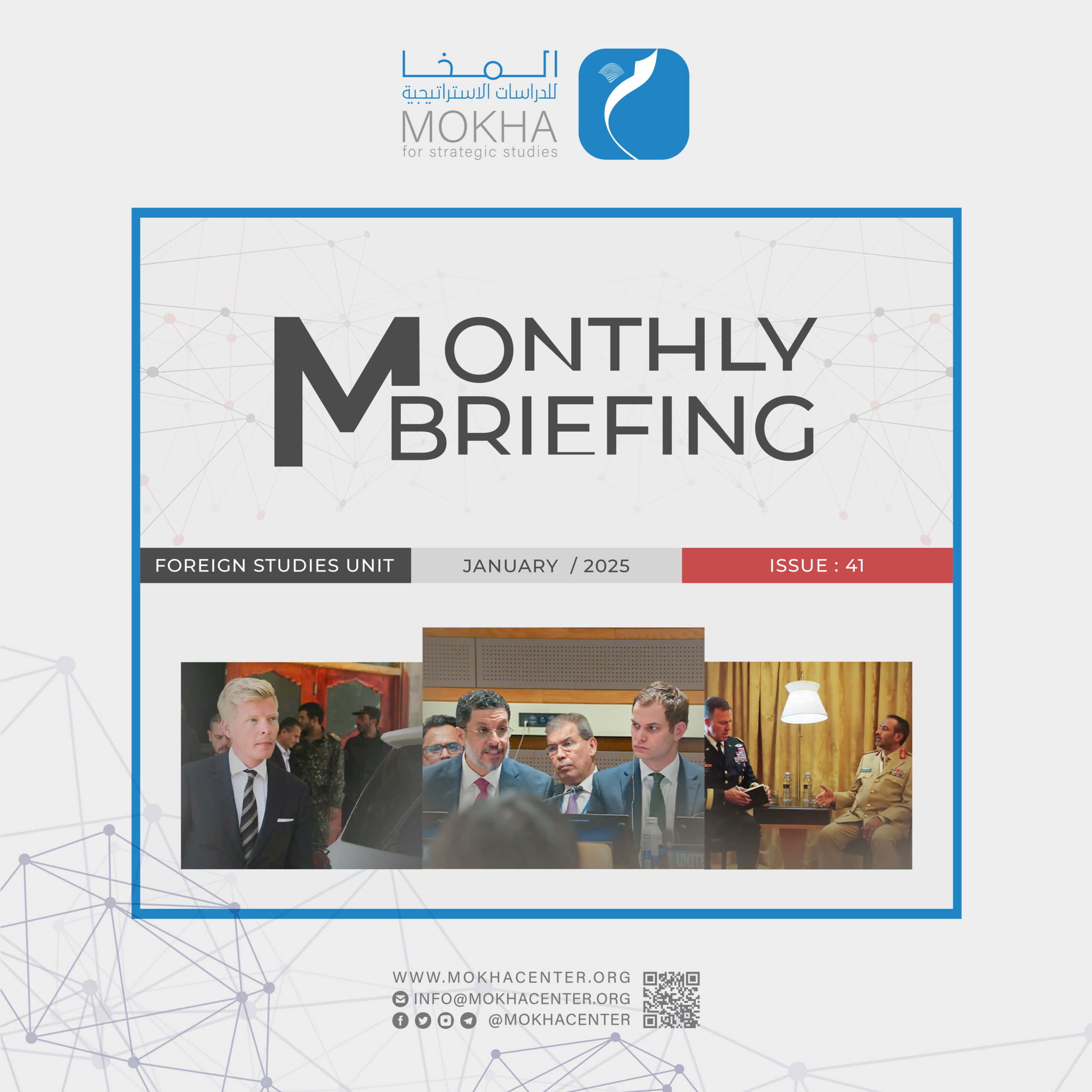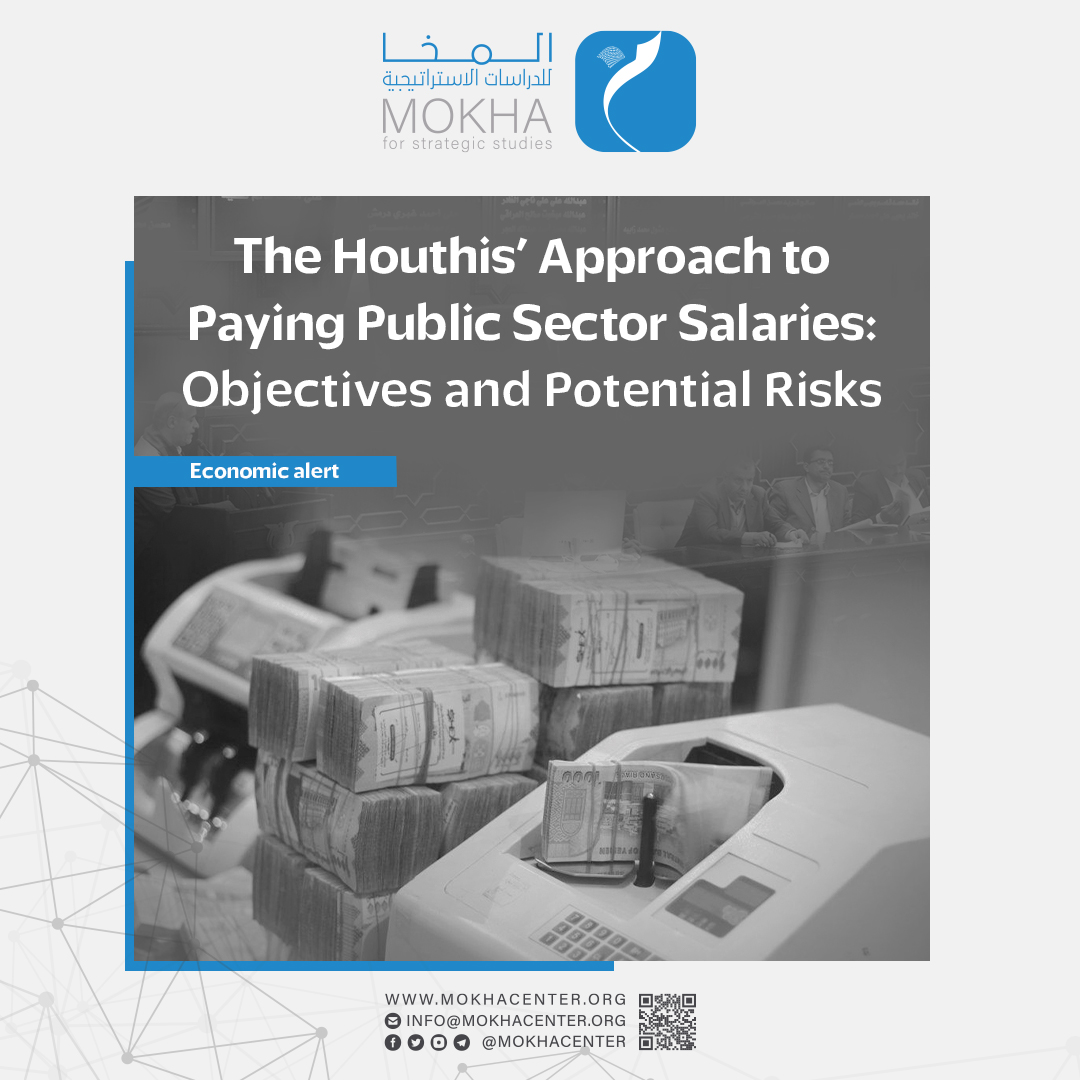The annual strategic report: Yemen 2021-2022

| Getting your Trinity Audio player ready... |
Abstract
The Mokha Center for Strategic Studies issued The Annual Strategic Report Yemen 2021-2022, which is the first strategic report that deals with the Yemeni situation in its various dimensions during the last period. The strategic report aimed to monitor, read and analyze the conflict that has been going on in Yemen for more than eight years. It also analyzes its political and military paths, transformations, and their various repercussions and effects on the various fields, economics, media, education, health, social, and psychology, to provide an integrated picture of general trends. The various developments in the aforementioned fields during the two years were the subject of monitoring and analysis, based on multiple sources of reliable, accurate, and efficient information.
The report consists of eight chapters, which include all aspects and features of the Yemeni scene that can be addressed to review the Yemeni situation in light of the conflict and war, during the period (2021-2022).
The First Chapter dealt with the political scene and foreign relations including the Yemeni political scene in 2021, at the level of domestic politics, and the level of foreign relations.
At the level of domestic politics, it dealt with the directions of the political scene movement since 2014, the developments in the southern and eastern governorates, as well as in the areas controlled by the Houthi group, in addition to the negotiations that took place during that period, the Geneva talks of 2015, the Kuwait talks 2016, and the Stockholm talks 2018.
The chapter also explored the trends of political developments during the year 2021, including the formation of a government of competencies, the obstruction of the Transitional Council to implement the Riyadh Agreement, the erosion of the legitimacy of the Transitional Council, the protests that erupted in its areas of control, and the confrontation that took place between the formations of the Transitional Council, in addition to the establishment of the Political Office of the National Resistance.
The chapter also discussed the developments in the areas controlled by the Houthi group, its consolidation of power, and its persecution of violators. As for foreign relations, the report dealt with the dimensions of those at the regional level with the Kingdom of Saudi Arabia, the United Arab Emirates, the Sultanate of Oman, and Iran. At the international level, it discusses the relationship paths with the United States of America and the European Union.
The Second Chapter also touched on the Yemeni political scene in 2022, at the same level of internal politics and external relations, and at the level of domestic politics, it discussed the Riyadh consultations that took place in 2022, the subsequent formation of the Presidential Leadership Council, and the performance of the Council and the subsequent early setback to that performance. The chapter also dealt with the developments of the scene in the eastern governorates, the humanitarian truce between renewal and failure, the issue of the attack on oil export ports, and the classification of the Houthis as a terrorist group. At the level of foreign relations, the second chapter dealt with the repercussions of the Houthi attacks on the UAE capital Abu Dhabi, the international welcome for the formation of the Presidential Leadership Council, the foreign visits made by the President and members of the Council, and the increase in the dependence of the Presidential Leadership Council on the two countries of the Arab Alliance (Saudi Arabia and the UAE), and international efforts to renew the humanitarian truce, and frequent US visits to the eastern provinces.
The second chapter of the strategic report dealt with the military and security scene in Yemen, in four sections. The first section talked about the warring parties and their armed formations, including the forces of the internationally recognized government, and the forces involved – formally – under its umbrella, such as the National Army (subject to the leadership of the Ministry of Defense and the Presidency of the General Staff), the Salafi forces of the Saada axis, the forces created in 2022, and the joint forces that include several formations. In addition, it dealt with the forces of the Southern Transitional Council, the forces of the Houthi group (Ansar Allah), and organizations described as “terrorism”.
As for the second section, it dealt with the military capabilities of the parties to the war, while the third section monitored the internal and external transformations of the military scene, and reviewed its prospects. In the fourth section, the internal security dilemma was reviewed in light of the changing war environment, on both sides of the conflict, the areas of influence of the legitimate government, and the areas of influence of the Houthi group. This section presented an outlook on the prospects of the security operation, the challenges it faces, and the opportunities it possesses.
The Third Chapter analyzed the economic scene in two sections: the first dealt with the Yemeni economic scene for the year 2021, and the second dealt with the Yemeni economic scene for the year 2022.
The first section discussed several topics like the macroeconomic developments in Yemen during the period (2015-2020), including economic growth, accumulated losses, rising unemployment, and poverty rates, growing financial imbalances, divided financial authorities, wasted financial resources, and fiscal deficits, divided financial powers and monetary chaos represented in the institutional division and monetary dispersion, the deterioration of the value of the local currency, and the escalation of inflation.
It also dealt with the performance of the external sector and expatriate remittances. The section then reviewed the economic conditions for the year 2021, including economic developments at the national level, whether in the areas of the legitimate authority and the southern governorates or the areas controlled by the Houthis, as well as the humanitarian situation, in addition to the development of economic relations with the outside world, whether with international and humanitarian organizations, with Gulf countries, Iran, or Western countries.
The second section covered several topics, the most important of which are economic growth and its future paths, developments in public finances, wages and salaries of public sector employees, public debt issues, inflation, exchange rates, the monetary and financial division, and the balance of payments. The third chapter is supported by statistics and charts.
The Fourth Chapter covered the media scene, in two sections. The first dealt with the Yemeni media scene in 2021, including the Yemeni media before 2021, the impact of the war on the media environment at the level of journalists and media professionals, media institutions and media, and the media situation in the southern governorates. it also discussed the reality of the media sector during the year 2021, covering printed newspapers, satellite channels, radio stations, and news websites, whether those under the authority of the Houthi group, those affiliated with the Southern Transitional Council, or those under the authorities of the legitimate government.
The first chapter also dealt with the interactions of the Houthi media, and the legitimate media, with the events in 2021 separately. At the end of the section, it touches on the reality of the new media in 2021, referring to the influencers on Twitter, from the side of the Houthi group and the side of the legitimate government, looking forward to the future of the media situation.
The second section of chapter Four, dealt with the Yemeni media scene in 2022, including the media coverage of the “legitimacy” media and those associated with the Houthi group, of events (consultations, new leadership, renewal of the armistice, and the post-armistice). Moreover, it covered the state of the new media in 2022, and the digital media campaigns exchanged between the parties to the conflict.
The educational situation in Yemen received the attention of the strategic report, to which Chapter Five was dedicated, as it presented a general background the conditions of the education sector, and the most important education indicators in Yemen, supported by data and statistics. The chapter also deals with the repercussions of the war on the education sector.
The health situation in Yemen was also presented in the annual report of the Al-Mokha Center, as Chapter Six covered the health scene, giving a general background on the health sector, and its conditions, while presenting the most important health indicators in Yemen, through data and statistics.
It also covered the scope of health services at present, and the external financing provided to them. The section also discussed the situation of water and sanitation in the Republic of Yemen, mental health, and the repercussions of the war on the health sector, referring to the collapse and deterioration it has been suffering from since the start of the war in 2015.
the Seventh Chapter of the report discussed the psychological and social, by providing an overview of the social and psychological situation of Yemeni society, and then reviewed the effects of the war on the social situation for the period between 2015 to 2022, especially on women and children, as well as on physical health. It also explored the social variables resulting from the war and the impact of war on social behaviors.
Chapter Eight of the report covered the humanitarian scene in Yemen, giving an overview of the humanitarian situation from 2015, until the beginning of 2021.
The chapter also reviewed the economic downturn and its impact on the suffering of society, the situation of human rights, and freedom of the press and media, in the period following the war, with an overview of the humanitarian conditions within the legitimate authority areas, as well as the areas of the Houthi group, In addition to the war on Marib and its repercussions on the humanitarian situation. The chapter also covered the international organizations and the human rights situation in Yemen during 2021-2022.
The report was supervised by the head of the center, Ateq Jarallah, and the editorial board included Anwar Qassem Al-Khudari and Nasser Muhammad Al-Taweel. Several experts and researchers participated in the preparation of the background papers: Ahmed Ali Al-Ahsab, Tamara Abdel Nasser Al-Hakimi, Hussam Ahmed Al-Saeedi, Khaled Ahmed Al-Rammah, and Aziz Abdel-Rahman. Al-Adimi, Ali Muhammad Al-Dahab, Muhammad Nasser Al-Nasiri, Mansour Ali Al-Bashiri, and Nasser Muhammad Al-Tawil.



